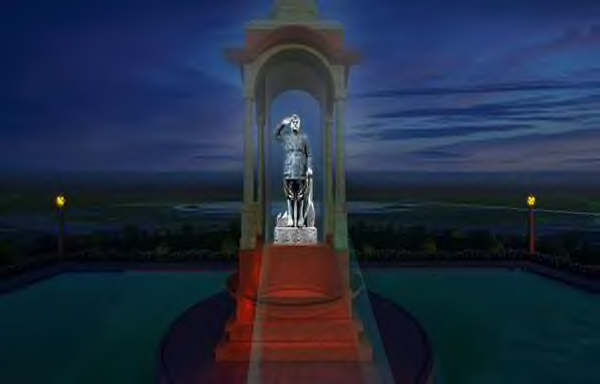Netaji Subhas Chandra Bose
- Posted By
10Pointer
- Categories
History & Culture
- Published
9th Sep, 2022
-
Context
Recently, the Prime Minister unveiled a grand statue of Netaji Subhas Chandra Bose near India Gate in the national capital.
- The jet black granite statue is one of the tallest, realistic, monolithic, handmade sculptures measuring a total of 28 ft. placed under the Canopy near India Gate.

About Netaji Subhas Chandra Bose
- Netaji Subhas Chandra Bose was born on January 23, 1897, in Cuttack, Orissa.
- His father Janaki Nath Bose was a famous lawyer and his mother Prabhavati Devi was a pious and religious lady.
- He was a brilliant student right from childhood.
- He was strongly influenced by Swami Vivekananda’s teachings and was known for his patriotic zeal as a student.
- He was known in particular for his militant approach to independence and his push for socialist policies.
- Famous Slogans:
- “Give me blood, and I shall give you freedom!”
- “Jai Hind.”
- The first person to call Mahatma Gandhi “Father of the Nation”, in his address from Singapore.
- Death: He is said to have died in 1945 when his plane crashed in Taiwan.
- However, there are still many conspiracy theories regarding his death.
Major Events linked to him
- 1919: Went to London to give the Indian Civil Services (ICS) examination and got selected but he was deeply disturbed by the Jallianwalla Bagh massacre and left his Civil Services apprenticeship midway to return to India in 1921.
- 1938: After his return, took over as the elected President of the Indian National Congress in Haripur and stood for unqualified Swaraj (self-governance).
- He recommended the use of force against the British which then combated against Mahatma Gandhi and his views.
- 1939: Re-elected as President of INC in Tripuri.
- However, soon resigned from the presidency and formed the All India Forward Bloc, a faction within the Congress that aimed at consolidating the political left.
- 1942: Travelled to Japan and took leadership of the Indian Independence Movement in East Asia.
- With Japanese aid and influence, he took the leadership of a trained army of about 40,000 troops in Japanese-occupied Southeast Asia known as the Indian National Army (Azad Hind Fauj).
- 1942: Earned the title ‘Netaji’, in Germany by the Indian soldiers of the Azad Hind Fauj.
